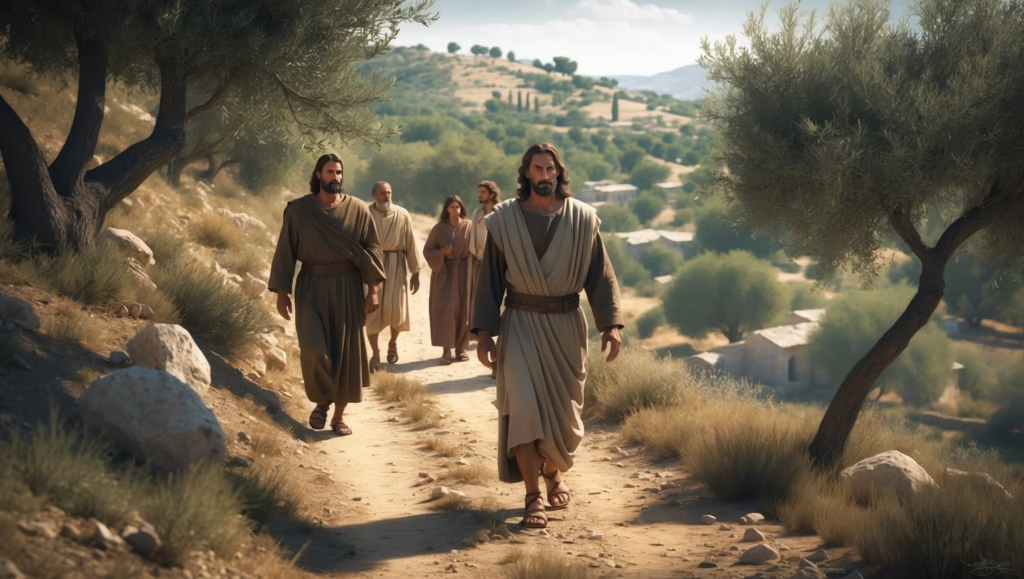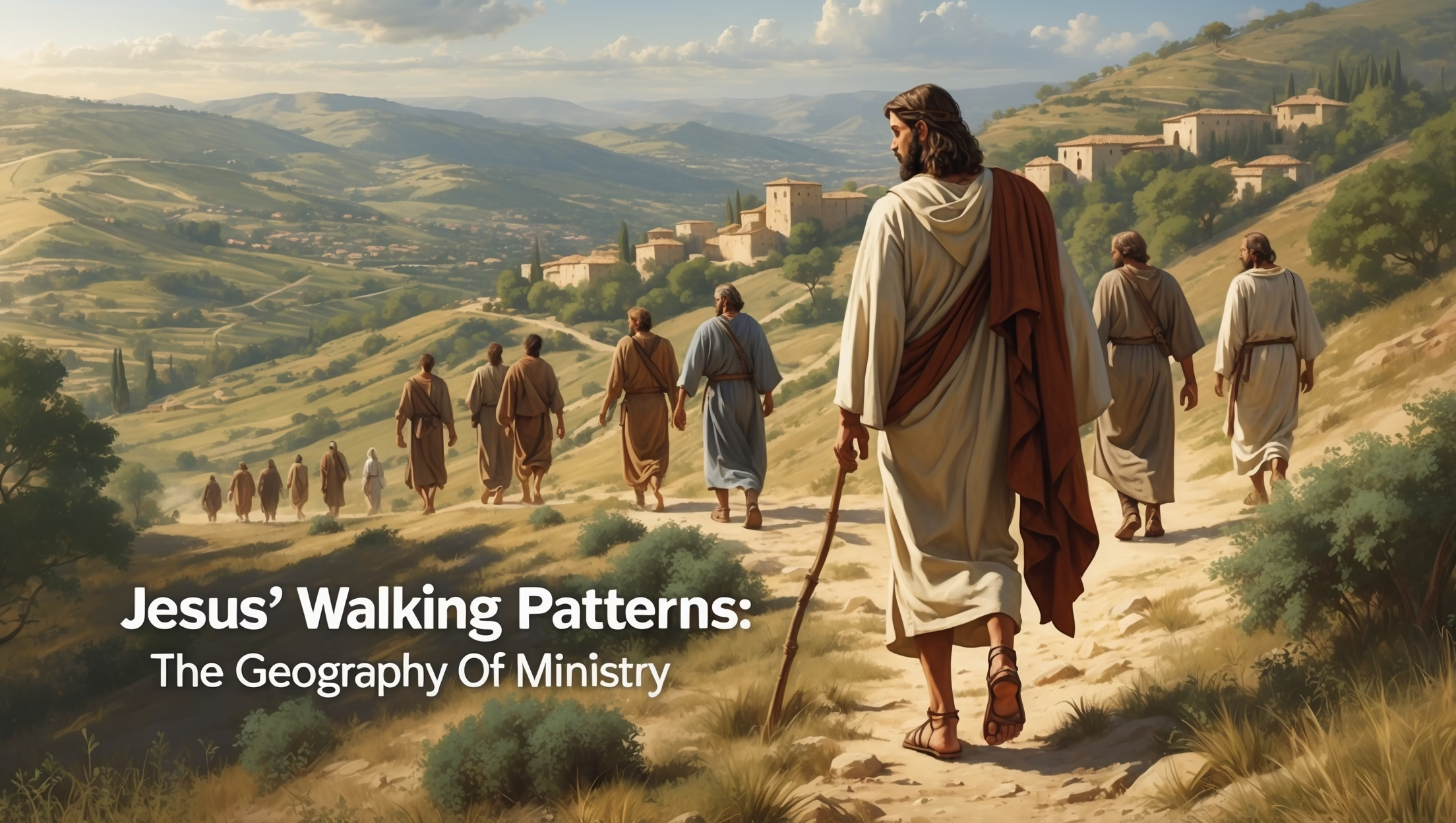The Messiah on the Move
When we read the Gospels, it is easy to focus on Jesus’ teachings, miracles, and parables. Yet, underlying His ministry was an extraordinary pattern of physical movement. Walking was the primary mode of travel in 1st-century Palestine, and Jesus’ ministry required both stamina and strategic mobility. Understanding His walking patterns reveals not only logistical insight but also the practical realities of spreading a revolutionary message across Galilee, Judea, and beyond.

Daily Distances and Route Reconstruction
Scholars estimate that Jesus walked an average of 15 miles per day during His ministry, with longer journeys connecting key regions. Travel between Jerusalem and Emmaus, for example, represents a standard day’s distance in the Gospels (Luke 24:13–35).
Key Ministry Hotspots
- Capernaum Hub (Matthew 4:13)
Capernaum served as a central base for teaching, healing, and recruitment of disciples. From here, Jesus traveled regularly to surrounding villages, markets, and synagogues. - Wilderness Retreats (Luke 5:16)
Despite constant demands from crowds, Jesus often withdrew to secluded areas. These retreats allowed prayer, reflection, and preparation for major teaching events. - Jerusalem Pilgrimages
Major festivals, especially Passover, required longer, more physically demanding treks to Jerusalem. These journeys were both spiritual and strategic, positioning Jesus within key religious and political contexts.
Physiological Insights: The Human Body and Ancient Travel
Walking such distances daily demanded endurance. Archaeological evidence provides a glimpse into the physical reality of Jesus’ mobility:
- Calloused Feet: Examination of 1st-century skeletons from Galilee shows thickened skin and robust arches, consistent with long-distance walking in sandals.
- Sandal Nail Patterns: Excavated roads and preserved leather sandals reveal wear consistent with frequent, uneven terrain travel.
- Energy Expenditure: Modern anthropologists estimate that walking 15 miles over hilly terrain would burn upwards of 3,000–4,000 calories, highlighting the physical demands on itinerant preachers.
Strategic Implications of Walking Patterns
Jesus’ mobility was not random. His route planning enabled:
- Ministry Coverage: Visiting villages, towns, and regions maximized exposure to diverse audiences.
- Crisis Management: Swift movement allowed Him to respond to urgent healing needs, social conflicts, and confrontations with religious authorities.
- Discipleship Training: Walking together with followers for hours at a time facilitated conversation, teaching, and character formation.
- Symbolic Acts: Certain journeys, such as the road to Emmaus or the trek to Jerusalem, carried theological significance, embodying lessons of faith, perseverance, and revelation.
Modern Pilgrimages and Technological Insights
Contemporary researchers and travelers have sought to trace Jesus’ walking patterns:
- GPS Mapping: The Jesus Trail, a 65-kilometer route in Galilee, recreates key ministry sites with precise mapping, allowing pilgrims to experience distances firsthand.
- Endurance Studies: Exercise physiologists studying participants on these trails confirm that sustaining daily 15-mile walks over hilly terrain requires training comparable to modern marathon preparation.
- Spiritual Reflection: Walking the same paths allows believers to connect physically and spiritually with the journeys described in the Gospels.
Theological and Symbolic Reflections
Jesus’ extensive walking embodies more than physical stamina—it conveys theological depth:
- Embodied Ministry: Jesus’ presence among people was not abstract; He literally walked with them, visiting homes, towns, and villages.
- Accessible Leadership: Mobility ensured His teachings were not confined to elites or urban centers.
- Spiritual Journey Metaphor: The act of walking mirrors spiritual discipleship—journeying, enduring, and trusting God step by step.
Key Insights: The Geography of Faith
By studying Jesus’ walking patterns, we gain insight into the logistics, stamina, and strategy underpinning His ministry. The Messiah’s mobility reflects:
- Practical ministry planning across diverse regions.
- Physical endurance integral to spreading a revolutionary message.
- Embodied leadership, demonstrating presence, accessibility, and relational depth.
- Spiritual symbolism, connecting physical journey with theological significance.
The geography of Jesus’ ministry reminds us that the life of faith is both literal and metaphorical—a journey requiring movement, endurance, and attentive engagement with the world around us.









